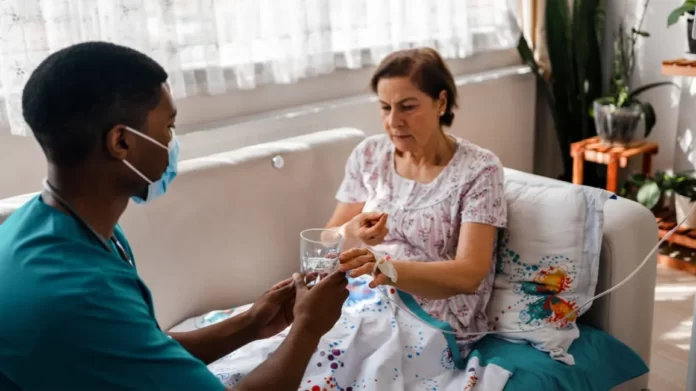Sometimes it takes more than one type of treatment to effectively fight cancer.
Chronic lymphocytic leukemia (CLL), for example, is a complex, stubborn disease that can often be difficult to treat.
So, researchers at the Dana-Farber Cancer Institute in Boston are pulling out all the stops as they look for drug combinations that work.
Clinical trials for CLL at Dana-Farber now consist of two and even three types of treatments.
However, these multiple-drug paradigms are vastly different than the chemotherapy regimensTrusted Source from past generations.
While those were a menagerie of toxic chemotherapies, officials say the combination treatments Dana-Farber is deploying are more focused and less toxic.
Current treatments for chronic lymphocytic leukemia
The current standard of treatmentTrusted Source for CLL involves targeted therapy and monoclonal antibody drugs, alone or in combination, according to the American Cancer Society.
Chemotherapy drugs may also be tried. Stem cell transplant may also be an option for some patients.
CLL is treatable, but it’s difficult to cure. Early treatment hasn’t been shown to help people live longer.
When a person has CLL, the bone marrowTrusted Source makes too many lymphocytes, a type of white blood cell, according to The National Cancer Institute.
New three-drug combo for CLL unveiled
In updated clinical trial results being presented at the American Society of Hematology annual meeting today, scientists at Dana-Farber will present their findings from a three-drug combination that has given people with CLL deep and lasting remissions.
Their findings haven’t been published yet in a peer-reviewed journal.
In the initial reportingTrusted Source of the phase 2 trial, which included people with any subtype of CLL, researchers reported that a regimen of acalabrutinib (a targeted drug), obinutuzumab (an antibody therapy), and venetoclaxTrusted Source (a targeted agent) achieved promising treatment responses.
The combination is called AVO for short.
Researchers say new CLL treatment is effective
Researchers say the treatment is effective in people with high-risk forms of the disease.
The updated results from the phase 2 trial show real progress, according to Dr. Christine Ryan, a clinical fellow at Dana-Farber and the study’s lead author.
“In this study, we investigated the combination of three FDA-approved drugs that each work in a different way to kill CLL cancer cells,” Ryan told Healthline. “We found that this triplet combination was highly effective with the majority of patients achieving remission of their CLL.”
Thus far, she added, “nearly all patients remain in remission and we are excited for this combination to be explored further in the treatment of CLL.”
In the updated results, a portion of participants had high-risk CLL. The researchers reported that a high percentage of these individuals had deep responses to AVO.
The trial was conducted at Dana-Farber, Beth Israel Deaconess Medical Center, Stamford (Conn.) Hospital, and Lifespan Health System in Rhode Island.
It involves 68 patients with previously untreated CLL, 31 of whom have a mutation and/or deletion in the TP53 gene in their tumor cells. This is an abnormality associated with an aggressive form of the disease.
At a median follow-up of 35 months, 83% of the high-risk patients had undetectable minimal residual disease (MRD) – no detectable CLL cells per 100,000 white blood cells – in their bone marrow, according to Ryan.
And 45% had the deepest measurable response to the treatment: complete remission and undetectable MRD in the bone marrow. Overall, the treatment was well-tolerated, with low rates of cardiovascular problems and infections.
After the follow-up period, 93% of the 68 trial participants were alive with no advance of their disease.
What’s next in CLL treatment research
The study has in part supported the development of a large, phase 3 trial of the regimen for patients with CLL without high-risk disease.
“Our data demonstrate that a time-limited triplet combination of targeted agents is well-tolerated and can provide durable benefit even in patients with the highest genetic risk form of CLL,” said Dr. Matthew Davids, a director of clinical research at Dana-Farber as well as the study’s senior author and principal investigator.
Davids said there is currently a phase 3 study ongoing that has the potential to lead to the approval of the AVO regimen by the Food and Drug Administration (FDA).
Dr. Michael Choi, an oncologist and associate clinical professor at Moores Cancer Center at the University of California San Diego, was not part of this trial but said he is pleased with the results.
“The thing about CLL is that the potential that this approach can lead to durable remissions is important and encouraging,” Choi told Healthline.
“While the standard of care are not failures, people with certain mutations do not do as well with what is currently available,” he added.
